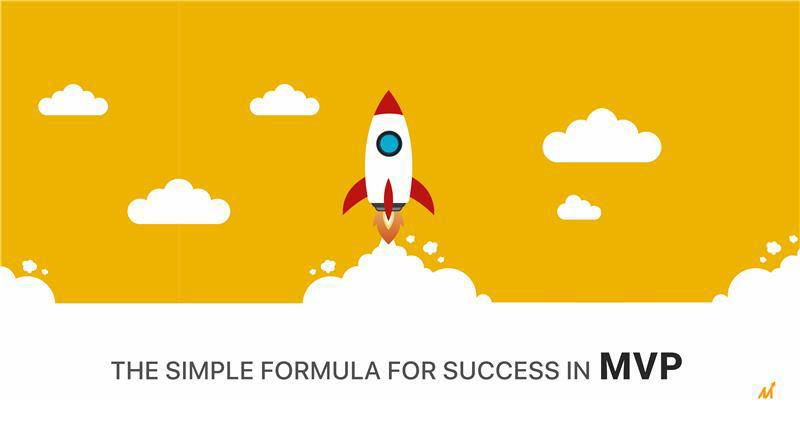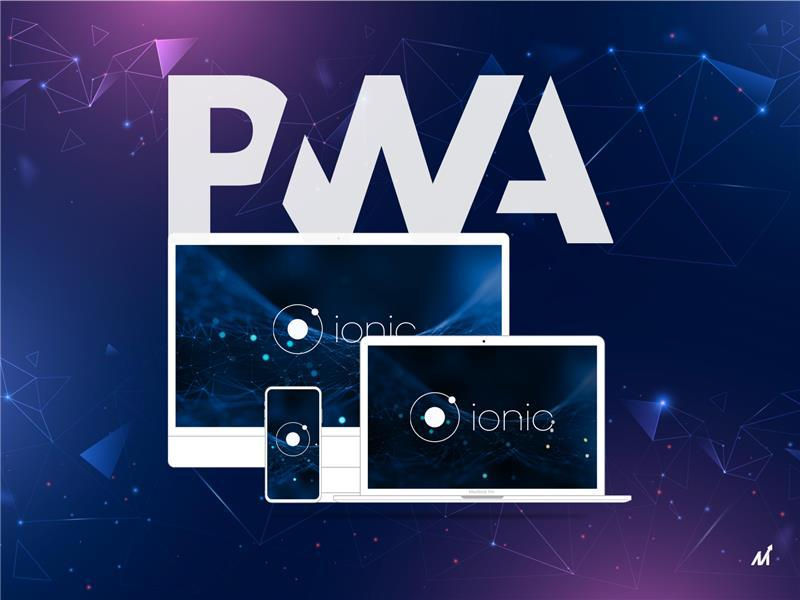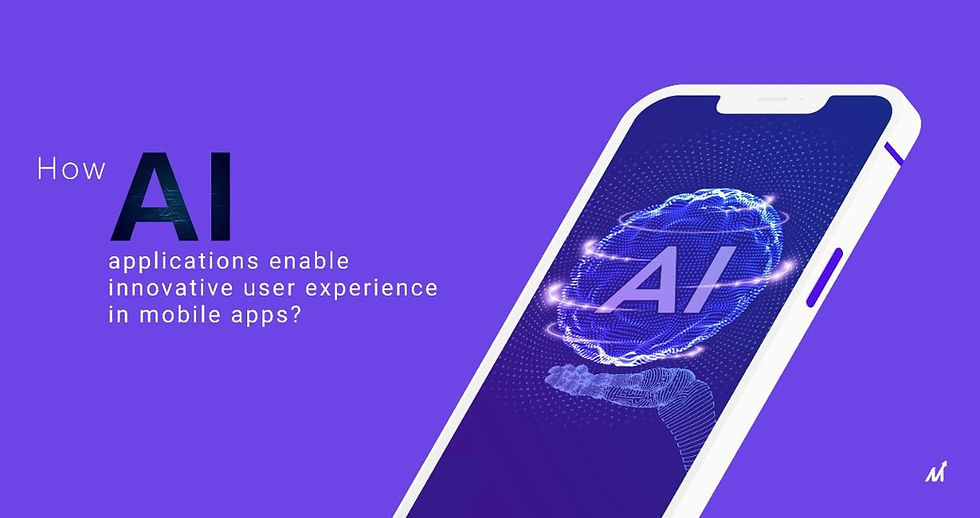How To Plan A Lean MVP That Scales? (An Essential MVP Guide)
- amit9154
- Mar 21, 2022
- 9 min read

How do you turn your business idea into a reality? With the help of your vision for the product or service. Then breaking it down into actional steps. Let's look at a real-world business example:
It is possible that you have heard of how Amazon was created inside the garage at Jeff Bezos' rented home. Are you aware of what the initial MVP of Amazon was like? It began with a basic site with a simple catalogue of books. They came up with several variations of the initial MVP. Today, Amazon is among the largest retailers worldwide.
There are many inspiring Minimum Viable Product models across the globe. But the main concern is: what is the most effective formula to achieve the success of an MVP? We've compiled some essential checklists for building the foundation of an MVP on this site. Also, a six-step MVP guideline to start your journey to develop software.
What exactly is MVP?
One of the terms or jargon which is very popular in the product development world is an MVP (Minimum viable product). It is the term used to describe a product. MVP was invented by Frank Robinson and became popular in the novel The Lean Startup by Eric Reis.
An MVP is simply an unlaunchable version of your software with the bare minimum of features. It allows testing and further development of your product. Your first product that you present to your first set of users will verify the worth of your concept. It's like a basic base for your ultimate mobile or digital app.
If you're stuck:
Creating a Minimum Viable Product to your business
If you haven't created your MVP yet, or aren't able to determine what features you want to add,
Also, if your MVP seems to be taking longer than expected.
Continue reading this blog to get all your answers.
The author, Eric Reis, said, "The ability to learn quicker from customers is an crucial competitive advantage that startups must have." (The Lean Startup). Leveraging the experience of customers and repeated iterations is how a minimum Viable Product will help you in your development process.
The main part of creating an electronic MVP along with custom software, is knowing its significance to your clients.
Here is a list of guidelines to follow when trying to build an MVP efficiently:
Select a Minimum Product that is Viable
What exactly is an efficient MVP, and why do you need to consider it for your digital product development?
A slim MVP is quicker to create with the smallest features and with a limited number of users. In most industries , the idea of launching an agile MVP is accessible and viable in contrast to sectors such as banking or insurance, which have regulations. The digital products must pass through certain regulatory bodies in such cases. Biotech is another area where the idea of a small MVP is unattainable because of obvious reasons.
However, for the majority of fields, Minimum Viable Product is created with a few features and in a shorter amount of time. Many billion-dollar businesses include Airbnb, Dropbox, Twitch, Stripe and more, have started with a very basic edition of the digital products. Did you realize that Airbnb began as a simple landing page with no features like map views or payments?
Read how to develop apps such as Airbnb as well as Slack? (frameworks and features) Find out here.
The point here is that starting your MVP is feasible with only basic MVPs with bare features, which act as a basis for testing in your digital product development. A lean Minimum Viable Product is therefore an element of a element of a building block. It's a procedure to develop the final product you want to build for your business.
Speak to your customers or users
It's a good idea to talk to some users or customers before you decide to create an MVP. It doesn't mean that you have to spend many years doing customer interactions or research. However, customer feedback and interactions with users will assist you in creating solutions that meet the needs of your customers. If you're your product's end-user, then it is also possible to bring those insights while developing your MVP.
Simply put If you're trying to solve any problem that your customers have, you should be aware of the issue and the possible solution to it.
Find out your MVP approach
While building an MVP You must consider possible MVP strategies and then implement those that are more in line with your company's goals and requirements. Some different kinds of digital MVP approaches are No product MVP, Single-feature MVP, Product-mockup and MLP. Each of these methods is explained in the later part of the blog. (Please refer to the step-by-step guide below)
Stick to limited functionality
You must distill what exactly your initial user's needs are. Start with a simple set of needs and prioritize them. The majority of founders who struggle to build their MVP find themselves stuck as they want to address all of their users' issues, including their potential users in the near future. For a more effective and efficient Minimum Viable Product, you should focus on a limited set of initially-enrolled users. Concentrate on solving their top-order problems, and then keep those remaining until later in the creation of your digital product.
The most important thing is to create a vision to your MVP and to set a duration to your MVP development. The advantage of a lean MVP can be that it offers a base to iterate. This is exactly what you need to aim for while building your MVP. It's just a starting point , and not a final product to include every feature. Contrary to what you might think, your MVP may not very memorable.
Do you remember when the most successful companies like Facebook, Airbnb, Twitch, Stripe and more launched their applications? And what did they look like in the beginning? That's the question.
Airbnb launched with a basic website and no features like payments and maps currently available. They delivered MVPs quickly, they iterated and often gaining insights from their customers, and are worth millions of dollars.
Optimize and improvise
Iteration is essential when building a Minimum Viable Product. However, you must distinguish between iterating and pivoting. It's not necessary to fall in love after having established your MVP. It is best not to get too excited adding new features. If your product doesn't work for a specific set of customers, you should not plan to grow your product. You must be able to come up with a solution in such cases of MVP development.
Also, before adding new features into your digital product, try to improve on the important ones first. Then, iterate. Continue to improve your solution until it solves users' issues.
Current debates about MVP: Is MVP dead?
One of the more popular questions posted on the Quora site is "how polished can a person be an MVP?". On the other the other hand, Hackernoon writes, "The MVP is dead. Long Live the Rat".
Google autocomplete can also suggest "MVP is dead" in the event that you type MVP Is...
But the majority of these discussions concern the misapplication and confusion surrounding MVP. They also suggest alternatives like RAT- risk Assumption Test ( to test the riskiest assumption), MVE - Minimum Viable Experiment ( to test the fundamental idea of the business concept), MCP- Minimum Compelling Product ( to create something that is that is compelling to users) and many other alternatives.
These alternatives emphasize the different aspects of MVP development. Also, they deal with some of the common issues with creating an MVP.
A 6-step MVP plan to build an MVP with success
The biggest challenge when building MVP is execution and materializing the idea you had in your head.
We've carefully created an easy step-by-step MVP procedure that will ensure an effective MVP as a product development company.
1. Comprehensive Research
The first and foremost stage is to get a better understanding of the issue you're trying to solve for your users and solutions that you are able to offer. For this you could use an established Product/Market Fit Pyramid that includes a set of intricacies. Like your target customer, need that is not met, features sets, the value of and user experience. It would help if you addressed vital questions such as "what is the market? ", "Who are the people with the issue? ", "Is there a demand in the market which your product addresses?" etc.? These questions will help in the stage of pre-planning and market research for your MVP. Apart from such relevant concerns, the three primary questions that you need to ask are:
What is the exact issue your MVP supposed to fix?
Who are the customers who are interested in this product?
What is the existing solutions to this issue on the marketplace?
2. Identification of features and priority
Next step involves to identify the features that you need to implement in the product. This is where your vision for the product is the one you should focus on. Consider and record the different features and specifications that might be beneficial for users' needs. Then, time-box these features for further development. If you find that all features don't make sense for your launch time, cut them down to the most important ones. The features you plan to incorporate in your product must be prioritized by their importance. Split the features and specifications into must-haves and could-haves and shouldn't-haves. It is vital to have one feature of top priority that represents your product's value at this MVP stage.
Do you know that most of the most renowned and successful apps today were made with only a few options as an MVP product? Airbnb did not have the payment feature and also the most frequently used map view feature. Also the Stripe app had no banking deals, and far fewer features at the start. Hence An MVP isn't about perfection , but rather a blueprint towards your ultimate digital product. You must implement the core features and start!
3. MVP approach selection
There are different approaches when it comes to building an MVP. It is essential to pick the one according to your needs and available resources. Your MVP development process should follow some of the MVP techniques listed below:
No-product
No-product MVP is a strategy in which you test your idea for a product and receive feedback with no code in the way that Eric Reis mentioned in his book The Lean Startup. Two methods of using No-product MVPs:
Idea visualization
This method lets you test your idea's potential and potential through the hypothesis of your product with marketing campaigns. There are no building blocks or actualization of your future product. It just shows or explains what the product's appearance and perform. This method can be utilized by using surveys, landing pages advertisements, videos, blogs, etc. The primary benefit of idea visualization over other MVP strategies is its cost-effectiveness. It also takes less time.
One of the most well-known examples of visualization MVP is Dropbox that began with a basic demo video and attracted thousands of users to their websites. The company then further developed the product based on the user feedback.
Start selling first, build later.
This is the way to begin a pre-sales of the product prior to building it. It is usually a crowdfunding campaign on platforms that are relevant, such as Kickstarter. Sell first MVP ensures your idea is well-liked by the public and attracts investors.
In simple words simply, you create an advertisement to market a product yet to exist and to develop.
Product-mockup
A product mockup allows you to develop a part of the future functionality of your product. By using the model-based approach you can have a number of options to select from when designing your MVP.
One-feature MVP
The name suggests that this approach includes focusing on the essential functions. So that your users understand what the product is designed to be used for. With this method, you need to build the MVP that meets the basic requirements of the user at minimum by the 80% mark.
MLP
Minimum Lovable Products or MLP concentrates on user satisfaction with the least viable product. As opposed to building a "viable" products, "lovable" replaces it to create a memorable experience for its first-time users. The concept behind the MLP is to boost an item's core attributes. In order to provide a better user experience, it incorporates visually attractive design, illustrations and micro-interactions, etc. It employs an intuitive information architecture to simplify flow , etc.
4. Identification of success criteria
How can you know if your MVP has been successful or not? To determine that, you need to specify the most important metrics that include:
Activations
Active users
Customer feedback
NPS(Net Promor Score)
MRR(Monthly Recurring Revenue)
CAC(Customer Acquisition Cost)
ARPU(Average Revenue Per User)
5. Make a storymap
Story Mapping comprises four components of Goals > Activities > Work Stories or Users > Tasks. It is crucial for Prioritizing features, and it also helps in creating an outline of your product's backlog. Goals form the basis of any product and require implementing certain features and activities. You can transform goals into user or job stories.
A story map helps you to understand your product's gains as well as the pain points.
6. MVP launch
If you have learned how to build MVP and have completed the process, you're nearly there. Launching your MVP should be simple because it is, in essence, the base of your next product. If you follow the steps mentioned in the previous paragraphs, you're ready to start your MVP.
B-M-L-I (Build- Measure-Learn-Iterate)
Finally, exercise BLMI (build-measure-learn-iterate). After you have created your MVP that is the beginning of building the product and therefore a constant process of validated learning. Once you've established your product's features with an MVP then you must try out the product and collect helpful feedback from the customers. Quality Assurance engineers conduct the initial testing phase and improve the overall quality of your product.
You need to review each element after you launch the MVP. From the reactions of your users to their feedback, the release everything can help you judge the potential and acceptability of your product on the marketplace.
Markovate has created a step-by-step procedure to ensure a successful MVP deployment as a product development company.
Markovate is an app and digital product development company that specializes in developing customized digital products using the most modern, up-to-date technologies. Find out more about our company on our website.







Comments